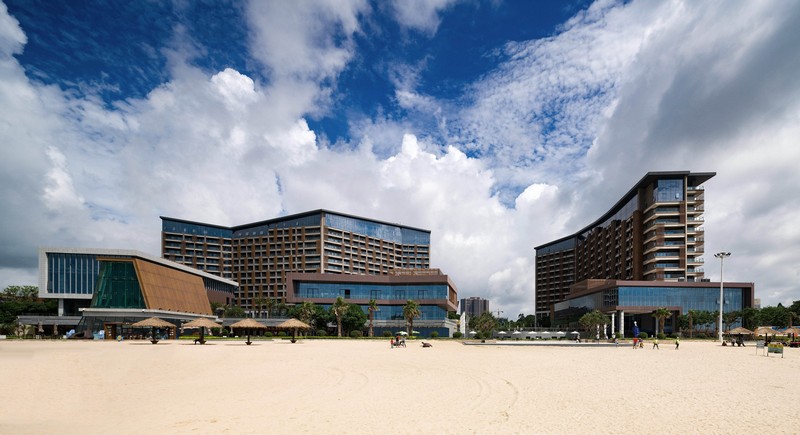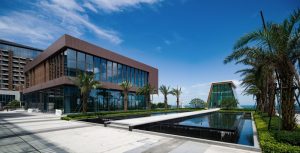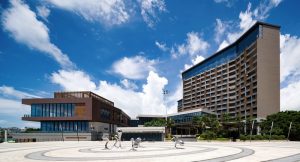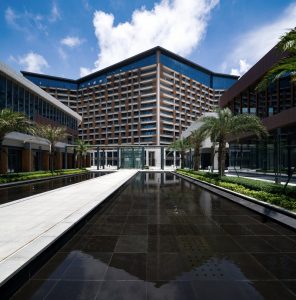(23 June 2017, China) Shishi Gold Coast Project is located along the southeast coast of Shishi city in China, facing the Taiwan Strait. Designed by Aedas, this mixed-commercial development comprises hotel, SOHO, large-scale restaurants and featured retail facilities. It is envisioned to be the largest modern, sustainable coastal international community which integrates leisure, culture, hospitality, travel and commercial components in the west coast of the Taiwan Strait. Phase 1’s boutique hotels and large-scale food-and-beverage outlets are completed.

Project: Shishi Gold Coast Project
Location: Shishi, China
Architect: Aedas
Client: Shishi Minnan Gold Coast Resort Ltd
Gross floor area: 57,682 square metres
Director: Dimi Lee


A sustainable coastal community
Design Concept

The zig-zag hotel roof creates an interesting skyline along the coast. Wooden-textured aluminum fins in random intervals on the façade add organic touch to the buildings. The food-and-beverage blocks are strategically placed at the waterfront for spectacular views, with the hotels as articulated backdrops.
Two ‘spines’ are introduced to articulate scenic spectacles with architectural spaces – the vista spine stretches from the main entrance of the site to the seaside to create a feel of grandeur for arriving guests; while the commercial spine with linear water feature marks the central axis of the courtyard between the food-and-beverage units and the hotel. At the end of the commercial spine stands a glass pavilion with wooden-textured aluminum panels and curtain wall, serving as popular wedding and event venue in front of the beach.
Sustainability

The hotel is designed with a single-loaded corridor which opens to the north elevation. The sea-facing south elevation is designed for balconies. Thanks to the small building depth, cross ventilation across the rooms is efficient.
The plan takes a zig-zag formation with three twists and four sections. The junctions at the twists are occasionally articulated as a garden and serve as recreational areas on each level. The hotel façade adopts an open-corridor circulation system which improves ventilation and illumination in corridors, eliminating the cloistered and disorienting nature of typical hotel corridors.
The covered verandah connects the two wings of retail areas along the green axis. It has a pergola top finished with wooden textured aluminum alloy architectural fins. This resembles the tropical wooden covered walkways in Maldives to make it more exotic. The pergola is fastened with two profiles made of PVF aluminum alloy.
The semi-underground car park has an intelligent open-plan design with efficient natural ventilation and illumination; this cannot be achieved without an extensive system of openings that lined the perimeter of the car park, which would otherwise be dark, suffocating and damp. The car park relies solely on natural illumination during daytime while natural ventilation is possible round the clock, reducing electricity consumption and cost.












